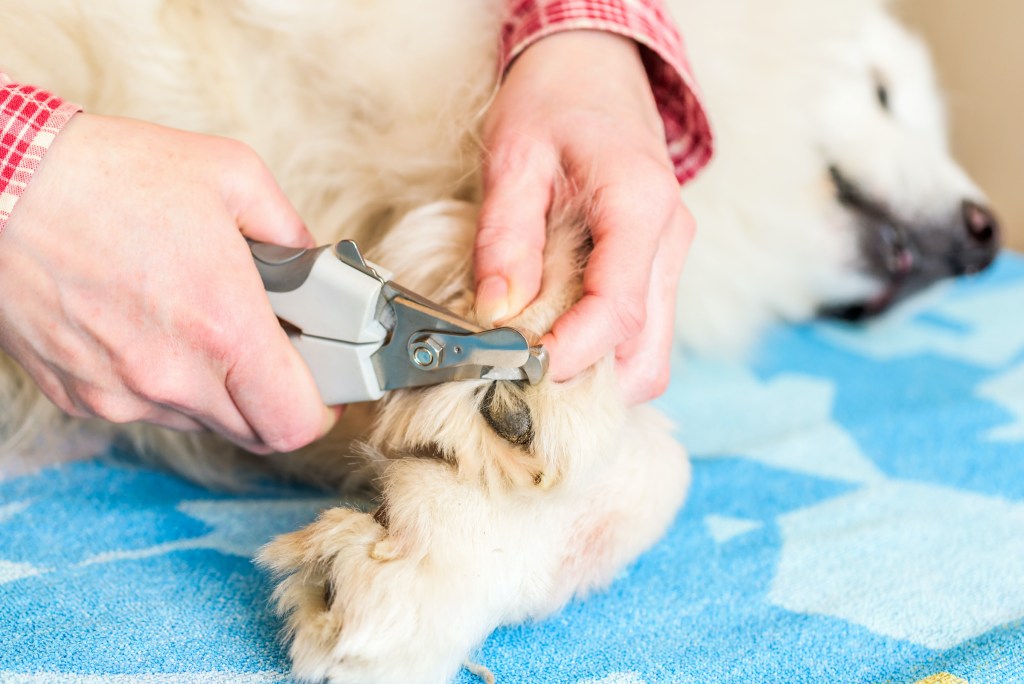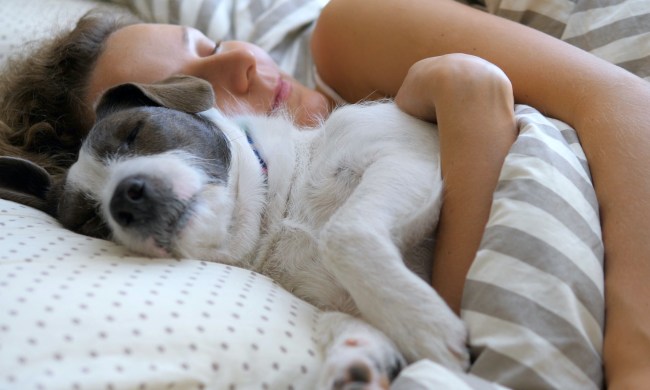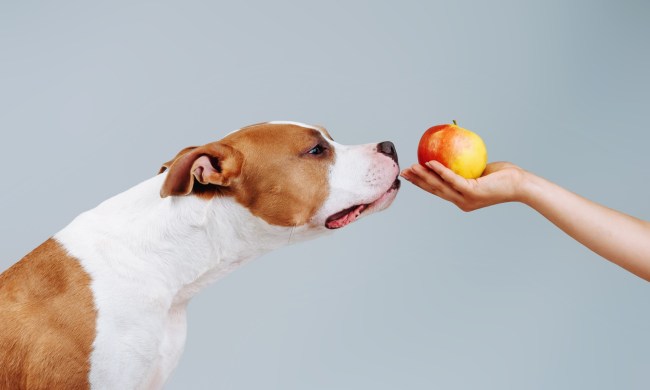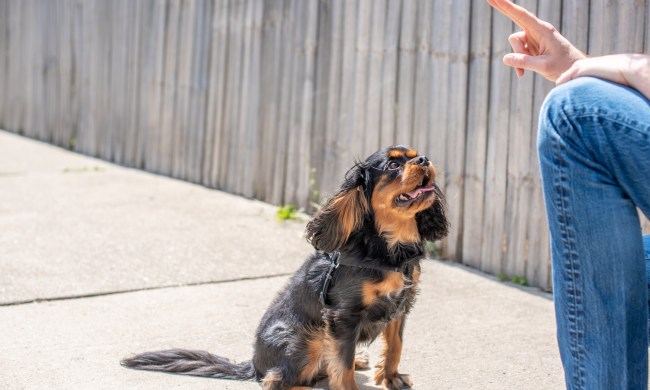Learning how to cut dog nails might look easy, but actually trying it is another story. Not only do you have to know what you’re doing, but your dog needs to be calm, cool, and collected, too… which is easier said than done.
With some tips and the right tools, however, dog nail trims can be a breeze. All you really need is a decent canine understanding and the right strategies for redirecting your dog’s nervous energy — two tools we’ll teach you right here. It’s up to you to decide which techniques might be the most worthwhile, but — remember — it’s your dog who decides what helps when everything is said and done. With some or even all of these tricks, though, they’re sure to feel at ease with quick nail trims. Here’s how:
Have the right tools for trimming your dog’s nails
One of the keys to keeping your pup comfy during a nail trim is investing in high-quality grooming tools. Amazon’s number one seller in the dog claw-care category is the Casfuy Dog Nail Grinder, with over 55,000 reviews (with a 4.5 average score out of 5).
This grinder is rechargeable and easy to hold, making it perfect for use at nearly a moment’s notice. It’s nice and quiet, too, so your dog won’t have a loud sound stressing her out while you’re trying to focus on her nails. Grinding nails can take a bit longer than cutting, but many pets and owners prefer this method.
Another option is traditional nail clippers, which often look like a large pair of pliers. A reliable pair like these dog nail clippers from Safari will allow you to grip and cut your dog’s nails with ease. With the addition of a safety stop, you won’t have to worry about injuries either. Of course, you should always learn how to use your new grooming tools before trying them out on your dog, but the results will be worth the work.

Keep them distracted
This is often one of the first strategies pet parents utilize to calm a worked-up pup, but certain distractions are likely to work better than others. Getting to know your dog and her preferences will surely help, but there are a few foolproof tools that both pup owners and groomers swear by.
One of these miracle workers is the Aquapaw Lick Pad, which allows you to spread peanut butter or your dog’s favorite wet food on a rubber tray that you can stick nearly anywhere. While you’re trimming her nails, your pup can lick away! Another option is investing in special treats or chews that your dog only gets during grooming — something like yak milk chews or another long-lasting treat.
Introduce your dog to nail trimming
As with any new thing, there’s bound to be some hesitation. By taking baby steps, though, you give your dog the chance to get comfortable and confident in this unfamiliar situation. Of course, touching your pup’s paws on a regular basis is a great place to start before you even introduce the nail tool of your choice.
On day one, just let her sniff it! Make sure to reward her with a treat or some affection to encourage positive reinforcement. Next time she sees the tool, she’ll remember the treat. Every day, you can introduce a bit more to your dog — touch the tool to her paw, let her hear the sound it makes, try trimming the tip of one nail. Each day, you’ll get a little closer to actually trimming the nail, but by the time you do, your dog won’t even be fazed. Don’t forget the treats every step of the way!
How to hold your dog’s paw for nail trimming
When the time comes to actually clip your dog’s nails, there are a few ways to make sure you’re doing it right. It helps to keep your pup as calm as possible using the techniques listed above, of course, but knowing how to hold your dog’s paw as you grind or clip her nails is crucial.
Using your non-dominant hand, place your thumb on one toe pad and your index finger on the paw above it. The index finger should be directly behind the nail, on the skin, but not on the nail itself. Remember not to squeeze too hard, either! Now, here’s the key, according to the American Kennel Club: Gently “push your thumb slightly up and backward on the pad, while pushing your forefinger forward. This extends the nail.”
It’ll take some getting used to before you find the comfiest way to hold your pet for this process, so be patient. You’ll need to support every nail you trim, even the dewclaw, so take time to practice!
Know when to take a break
Despite being technically successful at shortening their pup’s nails, many pet parents deem the process impossible due to the high levels of stress for both them and their dog. Truthfully, if you find yourself in a spiral of frustration, you should probably call it quits for the day. Your dog knows you’re stressed out and maybe feeding off that anxiety herself.
Remember, your dog isn’t being difficult or trying to give you a hard time when it’s time to trim her nails. In fact, she’s probably even more stressed out than you are. Taking her paw away or acting afraid are both natural reactions to scary (or just unfamiliar) situations. Give your pup some time and be patient with yourselves — it’ll come in time.



